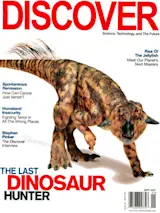Forget Baby Einstein. Birds have hit upon a cheaper, more reliable method for enriching their offspring's minds: spider snacks.
The blue tit, a European relative of the chickadee, feeds its chicks huge, heaping helpings of spiders peaking when the chicks are five days old. This behavior has long puzzled biologists because spiders are rarer and harder for tits to catch than are caterpillars, the chicks' other main dish.
Kathryn Arnold, an ornithologist at the University of Glasgow, recently found out why a bird might favor scrawny spiders over juicy caterpillars: They contain far more taurine. This amino acid is known to be a key input for a growing mammal—it's essential for the proper development of visual acuity, overall intelligence, and resistance to anxiety—but Arnold didn't know what it did for birds. Since the spider feast begins when the chicks open their eyes for the first time, she suspected that taurine ...














